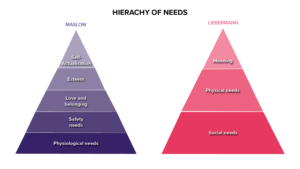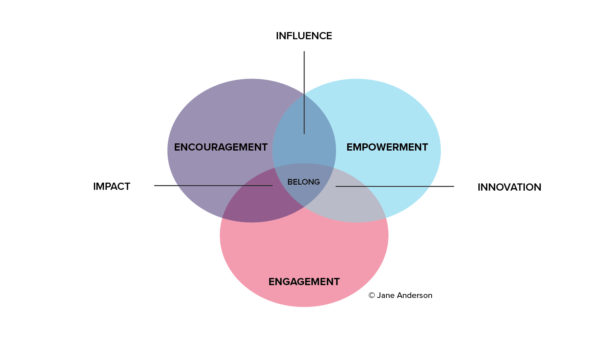The Power of Belonging: How to Meet Your Team’s Need to Belong
The need to belong is essential to teams. But it's often hard to achieve. Here's how to give your team a sense of belonging.
When I was 16, I went overseas and lived with a family in Toulouse, France. It was a beautiful country with an incredibly rich culture and the family I lived with was absolutely lovely. But they spoke almost no English. And though I studied French in school, I was certainly not fluent. I was a foreigner in a foreign country and even though I went to school there, and lived with a local family, and tried to integrate myself into the local culture, I didn’t feel like I belonged.
Things came to a head on Christmas Day, when I suddenly found that my inability to belong was simply overwhelming. I felt out of place and lost. I spoke to my family and they were passing the phone around so I could speak to everyone in turn. When it got to my cousin, I told her how I was feeling. I said, ‘I want to come home’. My cousin, who was older and wiser than me, and who had travelled quite a bit herself said that if I came home I would definitely regret it. She suggested that I should go to Canada instead to stay with my Aunt Maureen for a few weeks. So, that’s what I did.
Having the Christmas season with family, even in a foreign country, made everything better. Because that was a place and a people where I felt I belonged.
Of course, we’ve all felt this sense of being an outsider, regardless of our age. It might have been in a new city, at school, or even at work – but wherever it is, we simply do not feel that we belong.
The Power of Belonging
Belonging is absolutely essential to humans and, as leaders, to our teams. When people feel part of a tribe, they are more confident, perform better and have the courage to be imperfect. They also make better leaders and coworkers. But it is often hard to achieve. Sometimes that’s a reflection of our own lack of self-acceptance, and sometimes it comes more from external sources. But at the end of the day, belonging starts with self-love.
As Brene Brown says, ‘Courage starts with showing up and letting ourselves be seen. Because true belonging only happens when we present our authentic, imperfect selves to the world, our sense of belonging can never be greater than our level of self-acceptance.’
Liebermann’s Hierarchy of Needs
Maslow’s Hierarchy of Needs has been widely shared to demonstrate what humans need to feel accepted. However, this has been debunked.
Matthew Liebermann’s research shows that social needs are actually the biggest factor for humans – in fact, it trumps even physical needs. In other words, we need to be loved, to feel connected and to be accepted even more than we need food. Our brains are wired for connection.
Our new puppy Winston is an English bulldog. And it’s widely known that bulldogs have no sense of personal space. You can often find Winston sleeping around my neck and head, or wrapping around my legs and feet. And he wants nothing more than to sleep with us all the time. However, we tried to take advice and crate train him. That meant separating him from us to sleep in his own special space.
Winston hated it. He cried all the time because he wanted to be with us, his people. He wanted the warmth and safety. And he wanted to feel that he belonged. He had the need to belong.
Mark and I had to make a shift in our thinking. Rather than us thinking that now we have a dog in our world, we had to now think that we had a dog that was connected to us. We had to put his (and our) social needs first. This is no different when we are leading a tribe.
Creating a Sense of Belonging
There are times as leaders when it’s our responsibility to create a sense of belonging. But often we simply don’t know how to do that. This has become even more important in our current pandemic environment. In fact, last week Twitter made the announcement that they will be a totally remote workforce for the foreseeable future.
This means that culture is no longer the conversation. Without face-to-face interactions, it’s now about bridging that key gap – the physicality of no longer coming into an office – and still finding ways to create a sense of belonging. However, now the need to belong is amplified, because when things go wrong it’s much easier to take that personally.
Our natural self-talk is negative. So, as leaders we are competing with our team members’ own negative self-talk. That means we have to work even harder to help our team to feel they are part of the tribe while in a remote environment. We have to lead our teams so that they have compassion and curiosity, rather than assumptions.
So, what can we do we respond to the need to belong? How do we create a sense of belonging?
Encouragement
As leaders, rather than focusing on the things that need to be fixed in people all the time, we need find ways to give words of encouragement. We need to remind our tribe members that they’re OK, or at least that they’re going to be OK. This helps them stay connected because we are giving them both belief and feedback. This helps them feel like they have a voice, visibility and validation when they can be feeling very vulnerable in their transformational growth as part of the group.
Empowerment
As leader we need to look at our ability as teachers to educate people. Instead of catching fish we teach them how to fish. You’re not the one doing the actual work. Instead, you’re empowering your tribe to level up and do the work themselves. To empower your teams and your tribes you help them to achieve their best work by giving them the tools, the technology and even the time that they need to do so.
Engagement
To respond to the universal need to belong, and help our teams to feel a sense of belonging we must engage, and encourage engagement in return. That means we need to show up in the places and platforms that make this all work. We become leaders that keep the purpose clear to create a sense of how each person contributes to the vision of your tribe, the culture you’re trying to create how you connect. That might be Facebook, Slack or Messenger, or Google Hangouts, or in the kitchen at our workplace (if we return to office life!).
Next Steps
How much do you find the positive and encourage people by finding what they’re doing right?
How much do you give your team the tools, techniques and technology to be empowered in their work?
What communications platforms do you have in place to optimise engagement?
I’d love to hear your thoughts…
Jane Anderson is a strategic communications expert, speaker and the author of seven books including the upcoming Catalyst Content. With over 20 years of experience helping people to communicate confidently, she is obsessed with authentic influence and human connection to drive business growth in a world of disruption and automation. She delivers Content Creation Bootcamps (Virtual and Face to Face), Coaching and Keynotes. To inquire about her working with you or your organisation please contact us here.




